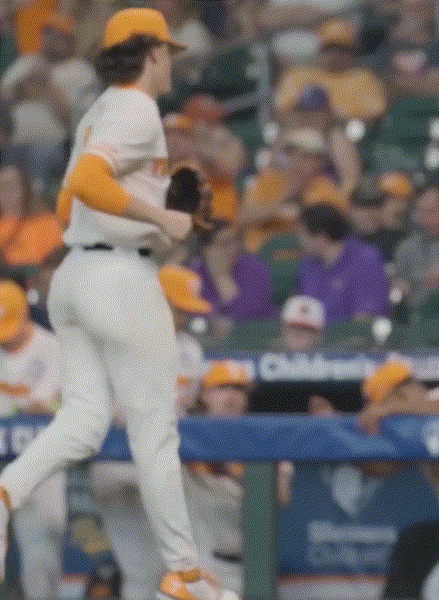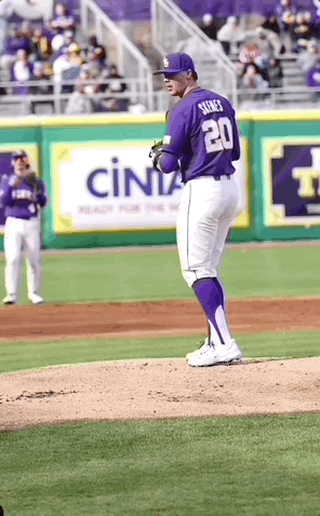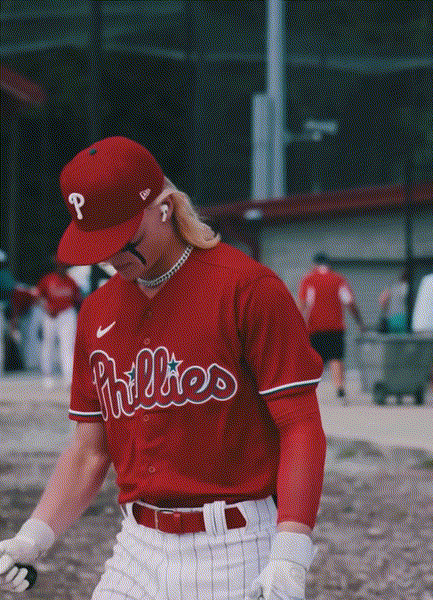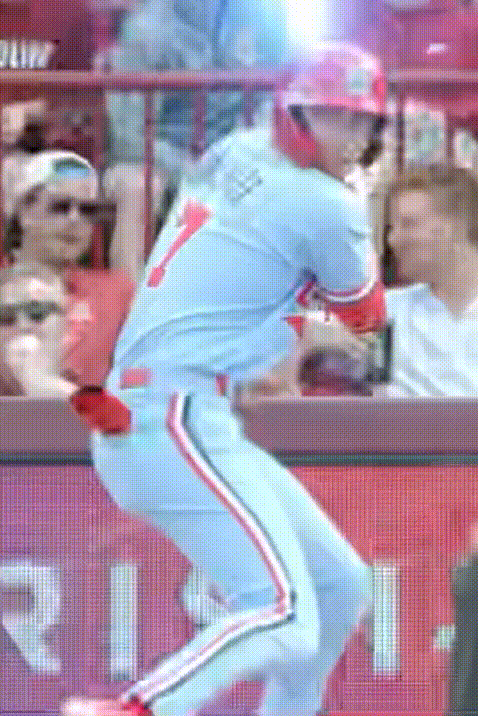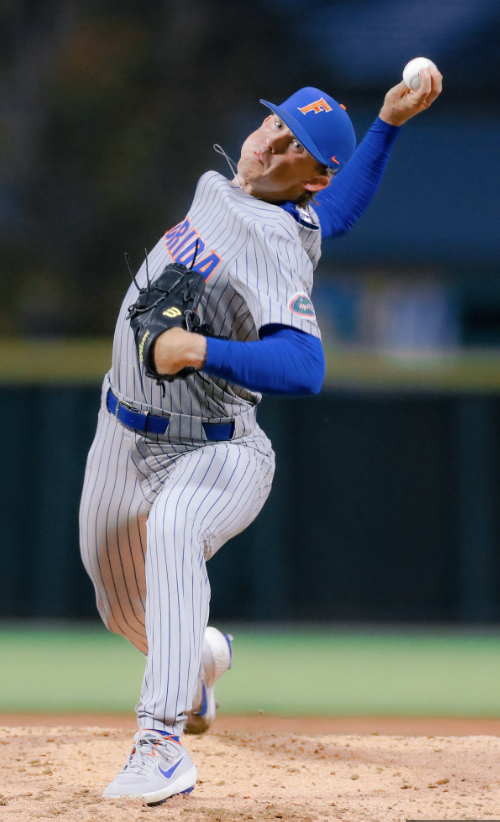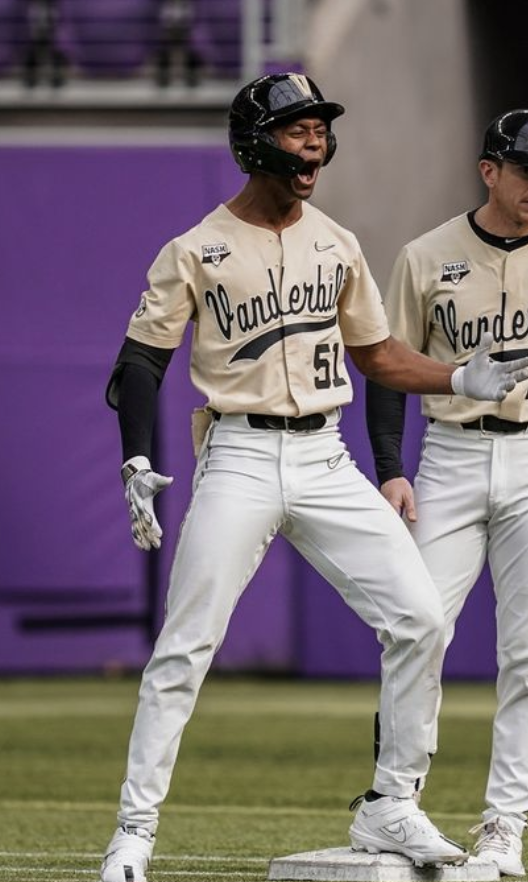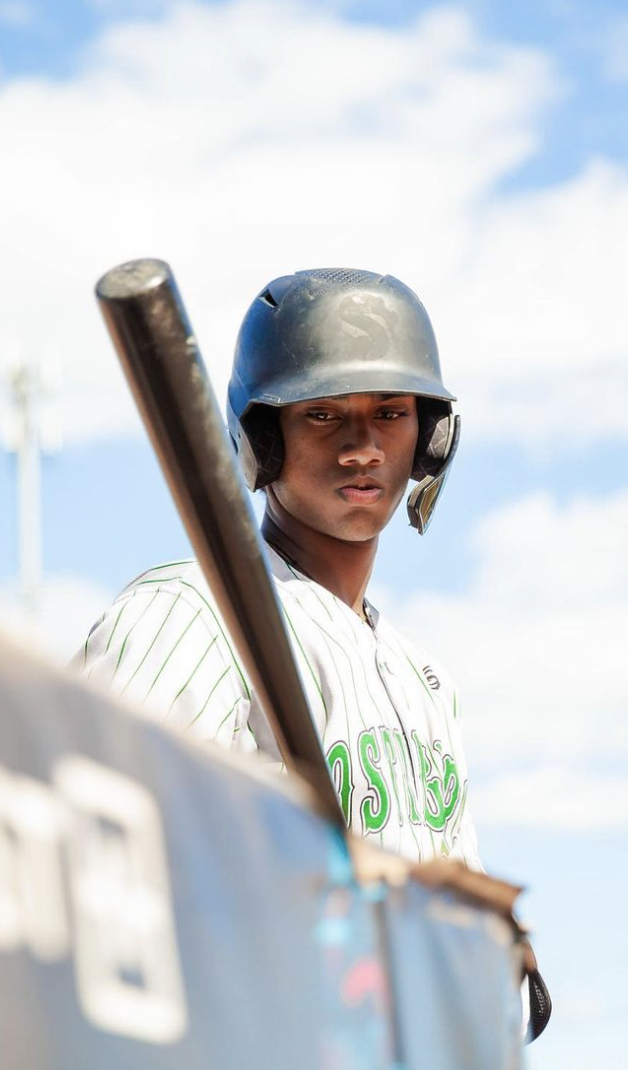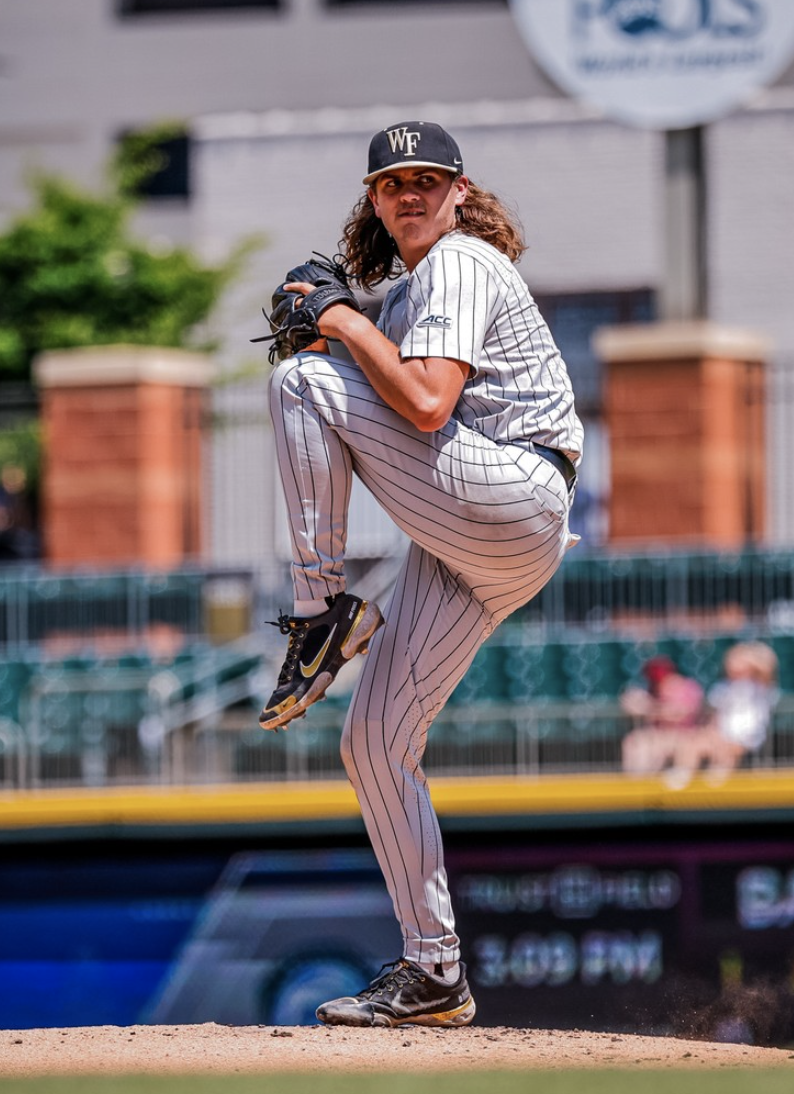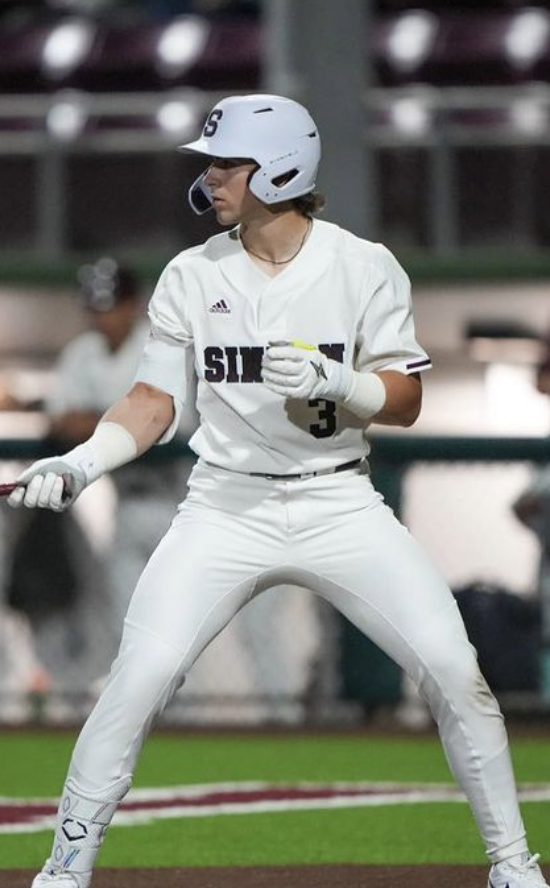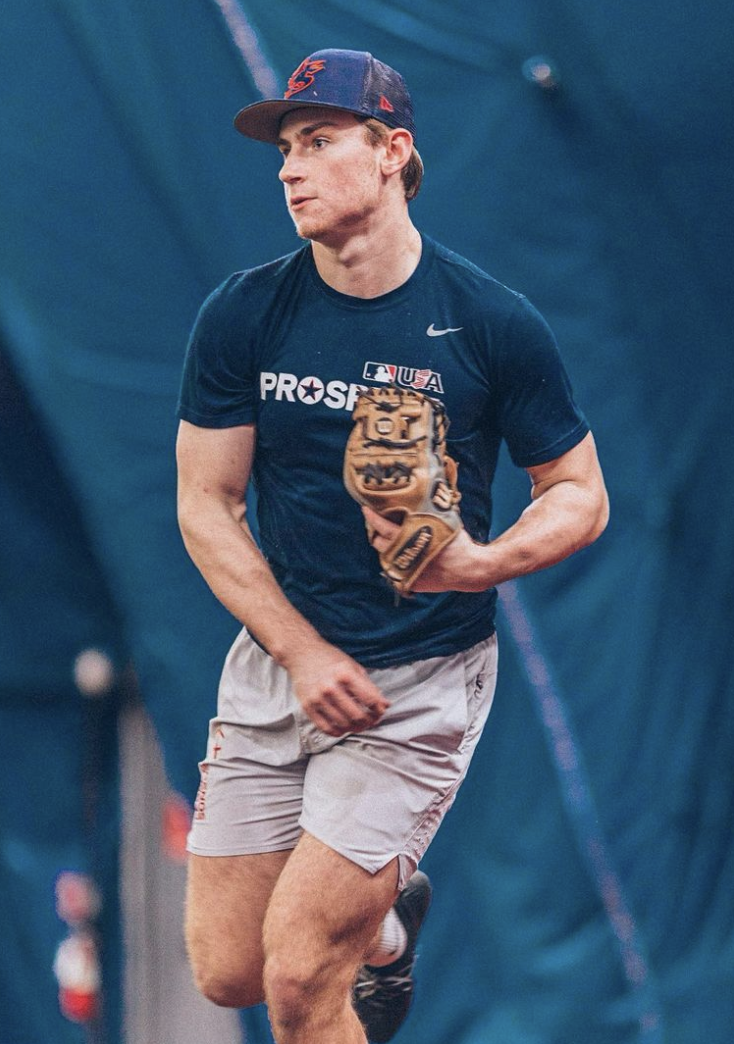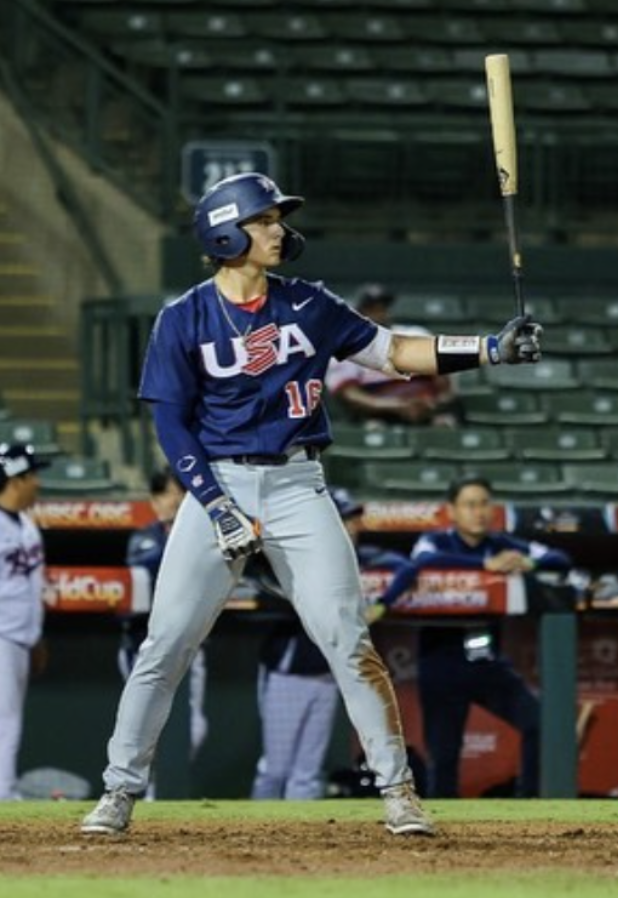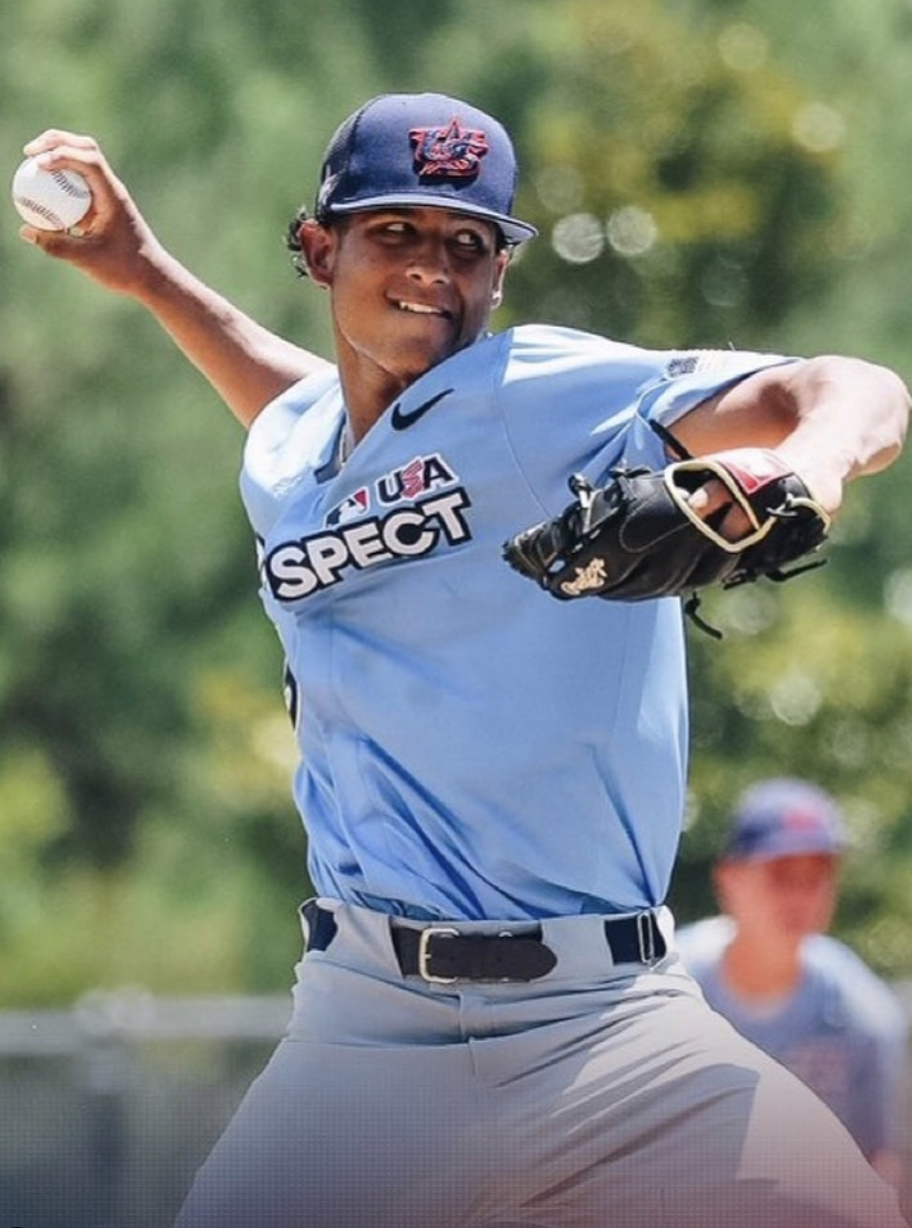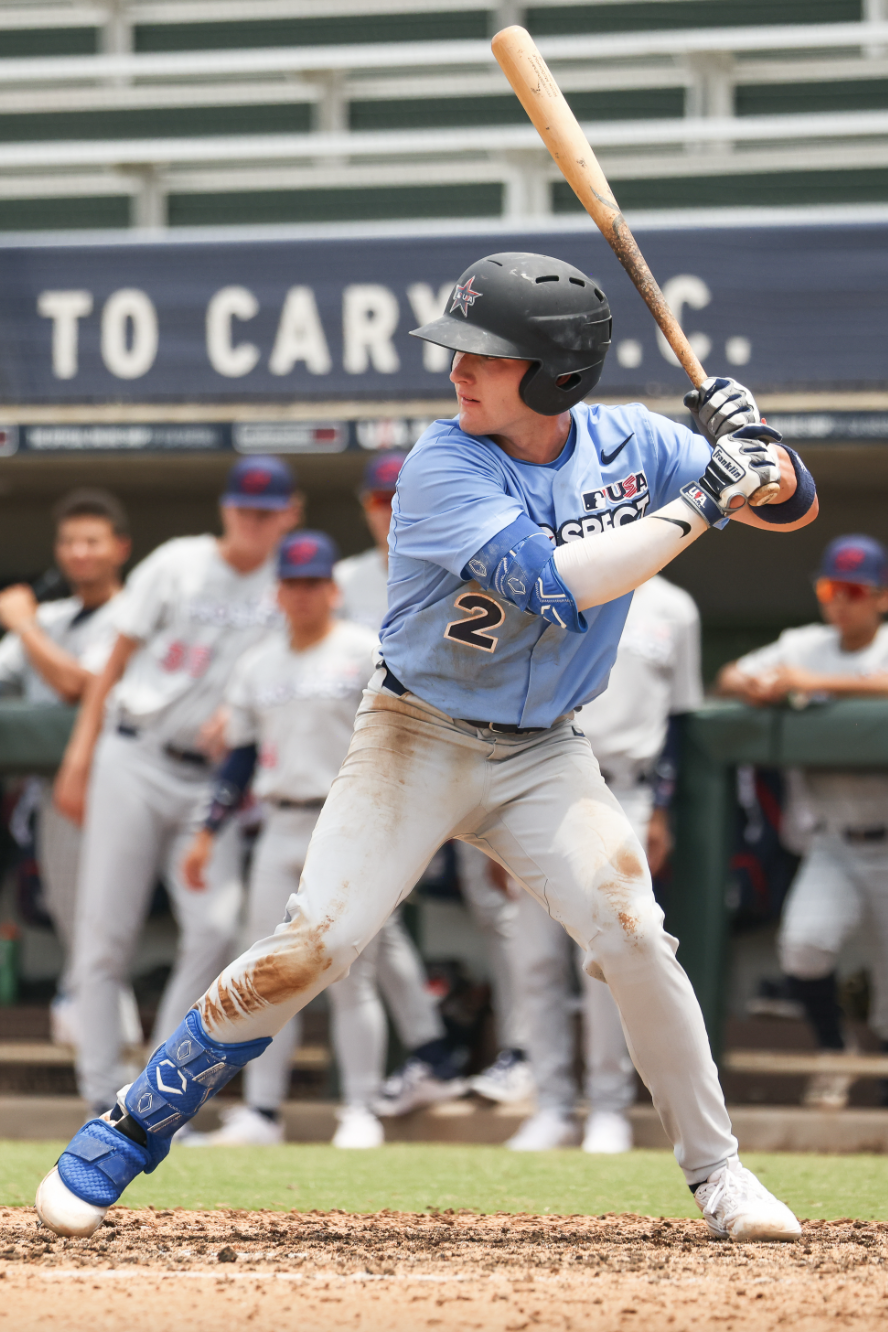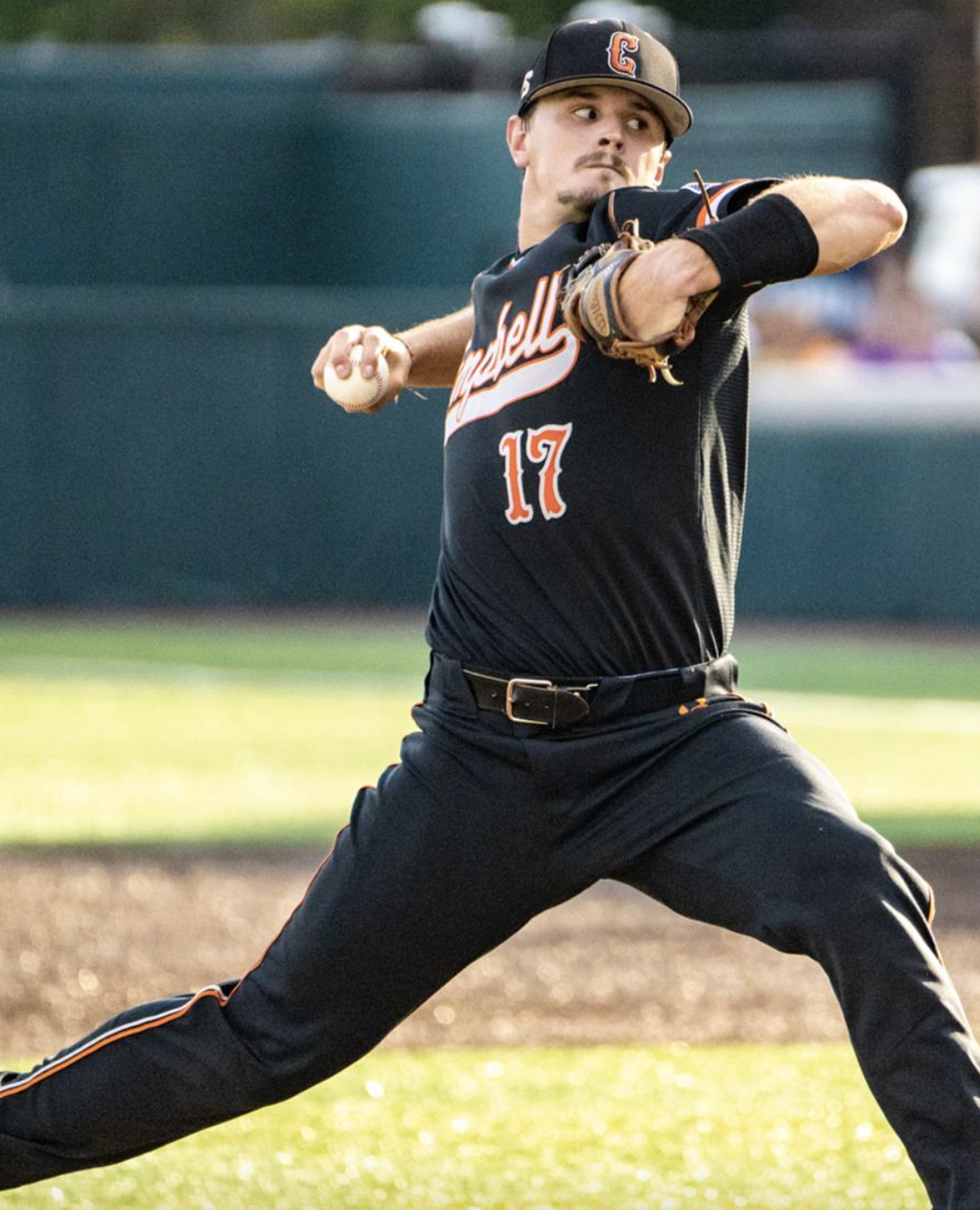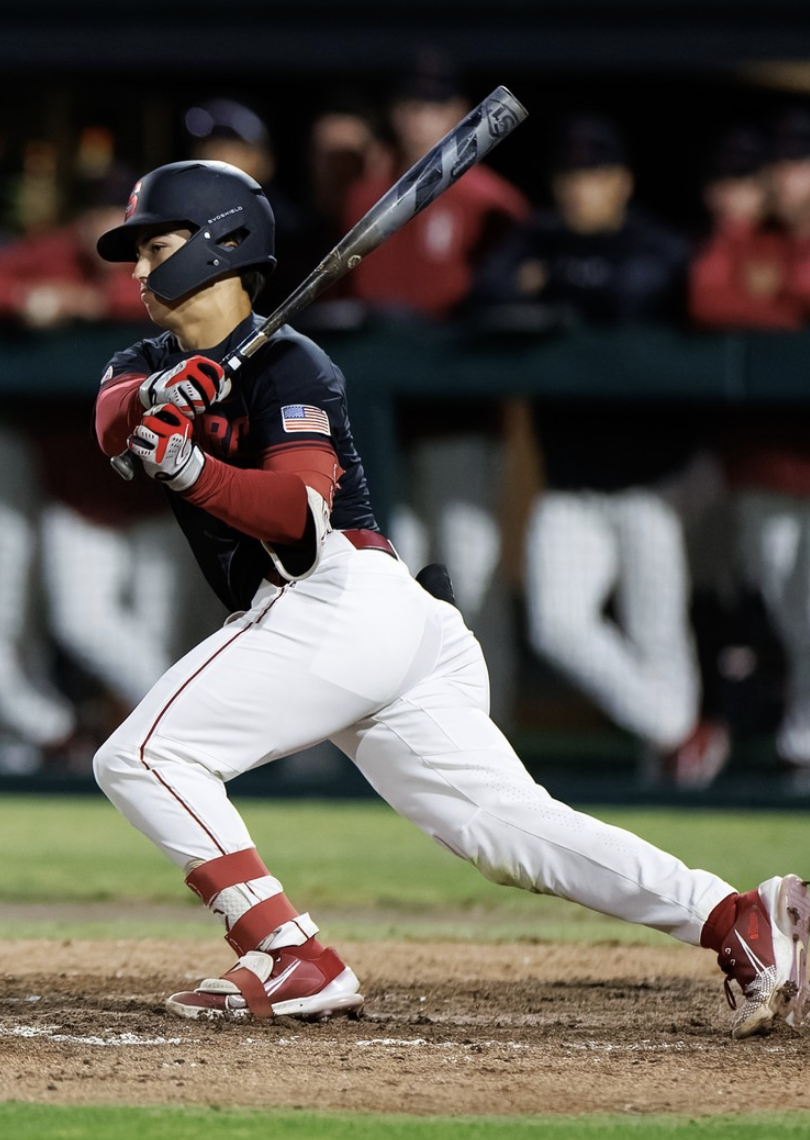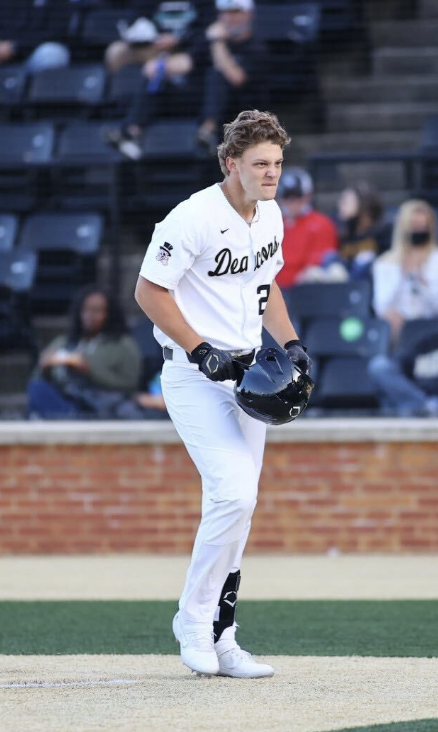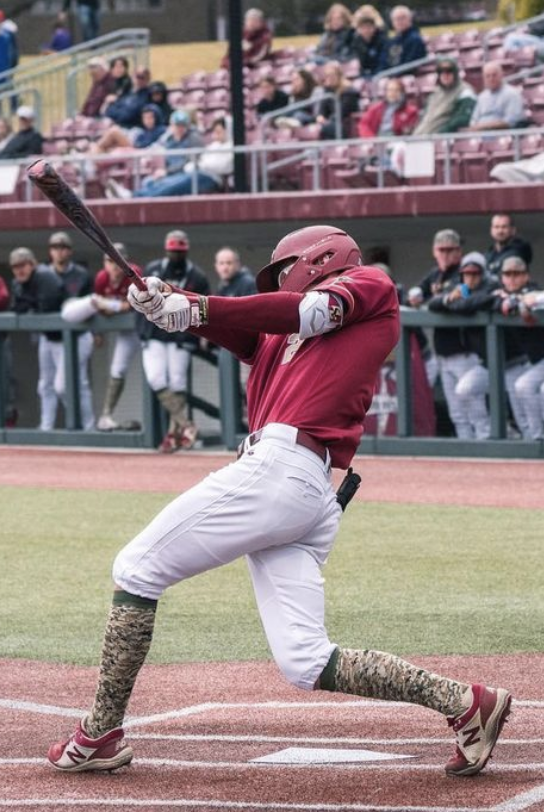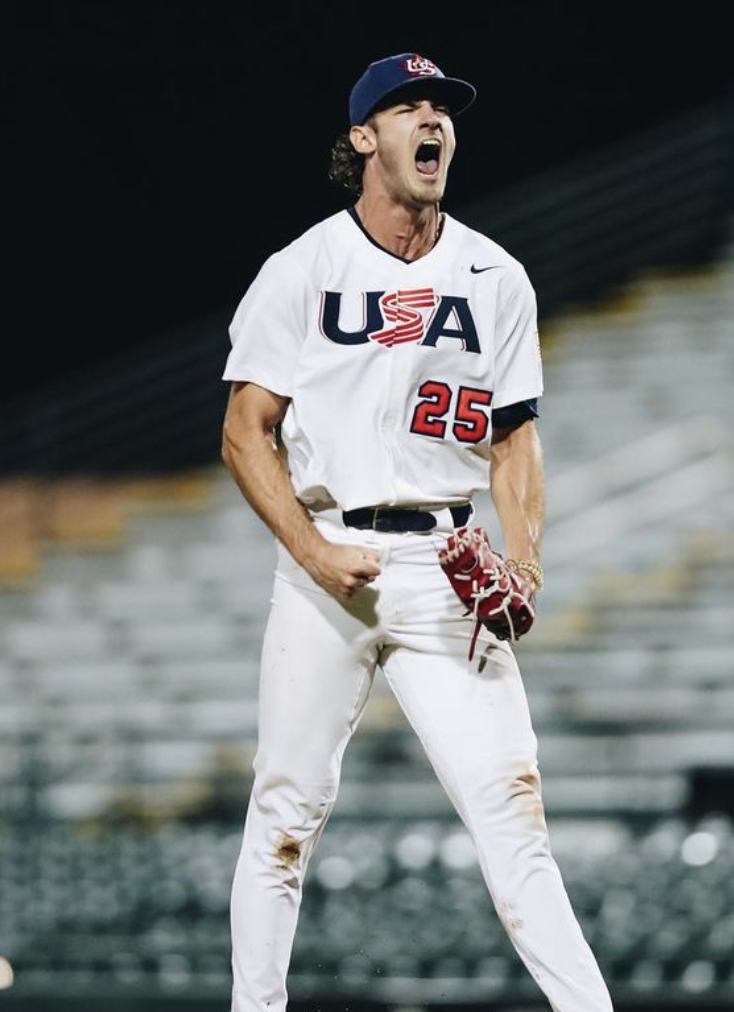College baseball is BACK, baby! The Top 400 is here. With high school ball roaring nationwide and college ball in high gear, we’re ready to re-rank the 2023 draft class. Our team has been at ballfields for the better part of two months now and we’re constantly digging into the analytics we can get our hands on. You can find a lot of our film and live looks in each player’s blurb below. As always, our boards are built on three pillars:
Our team’s Live Looks.
Trackman, Rapsodo and data evaluation.
Conversations within the industry. What are scouting executives, cross-checkers and area scouts seeing at the ballfields?
This Top 400 really establishes a few things:
This year has a reasonably established Top 10-12 names.
There’s value in the 20-50 range too.
This class is led by a strong and deep crop of college talents.
1. Dylan Crews
Outfield, LSU
Crews burst onto the scene as a true freshman, crushing baseballs, earning All-American honors almost unanimously. He carried that over into an equally impressive sophomore campaign in 2022. Crews produces elite exit velocities and balances the raw power with a strong approach and feel for the strike zone. He doesn't strike out and draws a ton of walks as well, though the swing-and-miss can get streaky against better stuff. In the field, Crews is likely destined for right field where his plus throwing arm and above average speed will be valuable assets. Crews is as close to a 5-tool talent as you’ll find in this class and could move quickly through the minor leagues given his position and skillset with the bat. He’s got a way about impacting the game in every aspect.
2. Wyatt Langford
Outfield, Florida
Langford has been an offensive force for the Gators providing plenty of punch and impact at the plate in Gainesville. This is a premium power bat with easy plus raw power to all fields. He's also a solid-average runner, but the legs play up thanks to strong instincts and burst in the field. He's probably destined for left field at the next level being pushed over by a superior defender up the middle. His speed will be an asset at any outfield spot, but he does have a fringy arm that may preclude him from right field. Still, this bat will be drafted for the juice. It's one of the more impactful bats available in 2023. Unfortunately, Langford suffered a lower-body injury that is expected to sideline him for much of the 2023 season.
3. Chase Dollander
Right-Handed Pitcher, Tennessee
The real deal. A buttery delivery with a low-launch, three-quarter arm slot and electric arm speed. Some evaluators compare the way he moves to Jacob deGrom. The fastball eats. It’s got ride, run and immense deception. He can run it up to 99 and hold mid-90s. Dollander mixes in a bevy of pitches, but it's his tight, sweeping slider that gets whiffs. Some scouts project it double-plus and the best breaking ball in the class. Dollander offers a big, high-70's curveball with huge sweep, though he's hardly had to use it. He'll also flash a changeup. Dollander has premium command, pitch-ability, athleticism and polish. Pretty much the complete package. The argument can be made he's the best college pitching prospect in over a decade.
4. Paul Skenes
Right-Handed Pitcher, LSU
Skenes works from a three-quarter arm slot with smooth mechanics, a short-arm action, hiding the ball on his back hip and creating a lot of deception. His velocity sits in mid 90s, though he'll be 97-99 over the first few innings in most games, reaching back for triple digits when he needs it. He generates plenty of carry on the heater, with spin rates in the 2400 RPM range. Primary secondary offerings include a devastating breaking slider with significant sweep and velocity, as well as tunneling action, as well as a low-90s splitter that has been less consistent of an offering. Skenes has shown the ability to manipulate the shape of his slider, and it's paid dividends depending on the handedness matchup. As far as the two-way potential goes, offensively Skenes has some contact issues but really excels at finding the barrel and has legitimate slugging potential. Evaluators certainly prefer the arm, however.
5. Max Clark
Outfield, Franklin Community
A premium high school hitter. Clark has a fantastic feel for the strike zone and has a swing catered toward using the entire field. He's a pro hitter. Clark doesn't try to hit homers. He's a line drive machine. That said, he's really begun developing into plenty of game power and could run into 20+ homers at his peak. Clark figures to stick in centerfield where his 70-grade run times and strong routes should age beautifully. The floor here is pretty high as far as prep bats go. If there's one critique, scouts do question where the body can go from here. He's already incredibly strong and the physical projection portion of his profile may be lacking. His profile projects somewhere between Andrew Benintendi and Michael Harris II.
6. Walker Jenkins
Outfield, South Brunswick
Jenkins is long, lean, athletic, and projectable at 6-foot-3, 205 pounds, showcasing some of the best bat speed and power in the class. He’s comfortably a plus runner with a huge arm that will play at any outfield spot. He's performed at every stop along the amateur circuit and earned a spot on Team USA 18u as an underclassman. It’s a premium bat in the 2023 class, even if he does physically mature into a corner role when it's all said and done. We’re talking about an thunderous bat that should hit for average and power. Skeptics worry about the myriad of injuries that have plagued Jenkins during his prep career. Jenkins has missed time with hip issues and a broken hamate bone, something teams will need to consider.
7. Jacob Gonzalez
Shortstop, Ole Miss
Gonzalez almost never strikes out, and he makes a ton of contact as well. This kid has fantastic eyes at the plate and can anchor any lineup he’s thrust into. His batted-ball metrics are loud. Really loud. He's got juice to the pull-side and only projects to develop more as he ages and works to understand what he's capable of. Some scouts question the swing mechanics at the next level as Gonzalez has a tendency to throw open his hips and can step in the bucket at times, but his production has never wavered against premium college stuff. Defensively, it's a solid average glove with an above average arm, though his size may ultimately shift him to third base. Gonzalez isn't a burner and probably won't be a base-stealer as a pro, but he’s a very good athlete.
8. Jacob Wilson
Shortstop, Grand Canyon
The son of MLB-veteran shortstop Jack Wilson, Jacob Wilson has been one of the most accomplished, mature hitters in the country during his stay at GCU. He's got a prolific eye at the plate with an extremely advanced approach and a grand willingness to use the whole field. Wilson never strikes out. Like, ever. In 2022, he took 25 free passes, punching out just seven times. Wilson showcases 40-grade power but many believe he'll grow into fringe-average pop in the pros. He's an average defender at shortstop and could comfortably move to third base or second base. Elite instincts on the field and makeup off the field, Wilson checks a ton of boxes and is a very popular figure among his peers and evaluators.
9. Hurston Waldrep
Right-Handed Pitcher, Florida
Waldrep transferred out of Southern Miss to Florida for his junior year after some impressive undergrad campaigns. The fastball gets up to 99 with immense hop at the top of the zone and true bat-missing qualities. The slider is thrown firm and short with late two-plane tilt that Waldrep gets hitters to chase regularly. The curveball may have the most potential of all his secondaries, but landing it for strikes consistently has come and gone. The splitter, however, is double-plus. It might be the best pitch in the entire class. The tunnel, the parachute, the separation, it’s all elite. Waldrep has a super-athletic frame with well-proportioned strength and a wicked quick arm. He's a true power pitcher with a bulldog mentality on the bump.
10. Enrique Bradfield
Centerfield, Vanderbilt
If Enrique Bradfield isn't the fastest player in the country, he's in the conversation. Bradfield will never been a thumper, but he's got elite vision at the plate, hardly ever expands the zone and walks just about as much as he strikes out. His frame still has room to add some muscle, so it wouldn't surprise scouts if he ended up with enough juice to run into double-digit homers at his pro peak. He’s a guy who knows how to get on base and is a nightmare for the opposition when he runs. In the field, he's comfortably a plus defender in center. We're betting on his dynamic glove, speed, and gamebreaking ability. He's a Kenny Lofton type of spark-plug that provides far more value than his slugging percentage will ever indicate.
11. Arjun Nimmala
Shortstop, Strawberry Crest
Long, lean and explosive describe Nimmala well. Pound for pound, it's prodigious power, pummeling balls on the showcase circuit in 2022. He's added some strength in his lower-half this spring, but he remains super projectable and likely to add plenty more strength in his core, especially given his age relative to his peers. Right now, it's more power-over-hit, but scouts think the hit tool could be average too. There's potential for an athletic, true impact bat on the left side of the infield. He's got a shot to hit 30+ homers per year and play on the dirt. Nimmala will be just 17 years old at the time of the draft and offers some of the most intriguing upside at the top of the class. One interesting fact? Nimmala gained much of his bat-to-ball skill through playing Cricket growing up.
12. Rhett Lowder
Right-Handed Pitcher, Wake Forest
The reigning ACC Pitcher of the Year, Lowder has some of the best pitchability in the entire class. He's been into the mid-90's with the fastball, sitting in the low-90s later into starts with running life, mixing it with a good slider in the low-80's and a diabolical change-up with late parachute and fading life out of the zone in the mid-80's. It’s one of the best changeups in the class and comfortably projects plus. He can pitch backwards off the slider and change-up with ease and has good command and feel of his entire arsenal.
13. Blake Mitchell
Catcher, Sinton
Mitchell is a do-it-all player and the epitome of a high school star. On the mound, he's been up to 97 with a promising slider. Some think he's got a home on the mound. But his actions behind the plate have many believing he's a prototype backstop of the future. Mitchell, a left-handed hitting thumper, has significant raw power and feel for driving the baseball without selling out for the juice. He can get pull-happy, but has shown a willingness to use the left-center field gap. Behind the plate, Mitchell has plus arm strength with upper-tier athleticism for the position. His receiving skills are impressive considering his age. Mitchell has some similarities to Tyler Soderstrom from 2020 with more pure ability behind the plate at this same stage.
—-> Our Interview with Blake
14. Colt Emerson
Shortstop, John Glenn
Emerson showcased a whole lot of tools on the circuit in 2022 with an impressive hit tool and sneaky power. The swing is anchored by lightning quick hands that have feel to all-fields with some pull-side juice. Emerson has shown the ability to get to any ball in any quadrant of the zone and slash it gap-to-gap. Emerson is largely average on the dirt, though his range and hands do show better than his average speed. He may ultimately be a second baseman or third baseman thanks to his added weight and subsequent impact, but if it's a plus hit tool with above average power, it won't matter where he plays.
—-> Live Looks Film
15. Brayden Taylor
Third Base, TCU
TCU's Brayden Taylor handled himself very well against the older and stiffer competition on the Cape this past summer for Falmouth after big years at TCU. Taylor has a short, simple swing from the left side with good upper body rotation and whippy bat speed. Taylor’s profile is actually carried by the bat, showcasing loud line drive and fly ball exit velocities to his pull-side. Taylor shows a keen eye at the plate, refusing to expand his zone in favorable counts and commonly walking more than he punches out. He played a bit of second base, but with good range to his right and a strong arm, he projects a more natural fit at third base if he’s forced off the shortstop position. He is an average runner.
—> Our Interview with Brayden
16. Aidan Miller
Third Base, JW Mitchell
Miller is one of the most physical preps in the 2023 class. He's big and athletic with explosive power that stems from a combination of raw strength and excellent bat speed. Miller is a consistent high-performer on the amateur circuit and his mammoth power finds it way into games already. He can run a fastball into the low-90s on the mound, but his future is likely swinging a bat. The body is already very thick and muscular, so he'll need to maintain his athleticism as he gets older. For now, it's comfortably a third base profile, with a corner outfield or first base role possible as he ages. A broken hamate bone de-railed his 2023 season, but the track record and production all throughout his prep career is too loud to ignore.
17. Noble Meyer
Right-Handed Pitcher, Jesuit
Jesuit HS in Portland, Oregon has become a total pitching factory. From Mick Abel to Nelson Keljo, Jesuit has a knack for developing arms. Meyer burst onto the scene during the 2022 showcase circuit with a fastball up to 98 featuring arm-side run and some ride. It's a deceptive slot that's tough to pick up too. His slider works into the mid-80s with sweeping action and short vertical tilt. Meyer offers a mid-80s changeup that lags behind his other two weapons, but shows enough promise for scouts to slap a future 50 grade on the off-speed offering. Meyer is also an impressive athlete coming from a 6-foot-5, long, lanky frame. He checks a lot of boxes.
18. Charlee Soto
Right-Handed Pitcher, Reborn Christian
Soto brings a lot of intrigue to the table. He's been up to 98 MPH, sitting 92-96 MPH with late running life. He's got a short biting slider in the mid-80's that he's primarily utilized against righties to garner chases, as well as a tumbling change-up in the same velocity band that he can command away from lefties with consistency. He can get a bit erratic with his strike-throwing at times, but there's a ton of upside to unlock here, plus he'll be one of the youngest players in this draft class.
—-> Our Interview with Charlee
19. Kevin McGonigle
Shortstop, Monsignor Bonner
McGonigle is a smaller, twitchy infielder with lightning for hands and impressive core strength at the plate. He's hit absolutely everywhere he's gone. It's a compact, strong, sometimes rotational cut that creates big pound-for-pound pull-side power, though McGonigle is in no rush to sellout for the juice. He'll ambush pitches over the right field fence, but it's not necessarily his game. This is an advanced hitter. McGonigle has a loose, flashy glove with bouncy actions on the dirt. He possesses an average arm and his feet can get short and choppy on balls his to his left and right. Some believe the profile is best suited as an impact second baseman, though proponents point to his athleticism, lateral burst and sparky actions as reasons to let him develop as a SS.
20. Cade Kuehler
Right-Handed Pitcher, Campbell
Kuehler developed extremely quickly upon arriving to Campbell. He's got a super-quick arm and natural deception that's been hell on the opposition. The fastball is already up into the upper-90s with top of the scale ride. He's really dialed in a slider/cutter that flash plus when he's got feel for it. Kuehler will need to continue throwing more strikes and ironing down the effort in his delivery as he develops and gets more college innings under his belt, but there's definitive day one upside here if the track record and production continue to impress.
21. Tommy Troy
Second Base, Stanford
Tommy Troy is a versatile defender with enough athleticism to handle any of the three infield roles, as well as left field. Offensively, there’s very real power here with budding exit velocities and a keen eye at the plate, despite a rough go of things on the Cape where poor umpiring derailed an otherwise impressive display of approach. Troy projects a potential average regular at the next level with the bat being the carrying tool. He looks like an offense-first second baseman with slugging impact. Those are the types of players that play a decade at the highest level.
22. Kyle Teel
Catcher, Virginia
Teel is a professional hitter with high contact rates and he really avoids punch outs. He's still learning and maturing into the slugger he'll eventually be, developing a profile at the plate. At times, he shows feel for lifting the baseball and tapping into his raw power, but more often than not as a true freshman Teel struggled with a consistent attack angle and ground ball woes. That has improved year over year, however. At his best, Teel has above average or better raw power with feel for loft. Teel if fringy behind the plate, though he does have good athleticism. His range is limited back there and he gets a bit stabby with the glove, but there's a shot to start back there. The arm is average.
23. Brock Wilken
Third Base, Wake Forest
Wilken is a middle-of-the-order power bat with an advanced approach. He had a huge freshman season in both ACC and Cape Cod League play. His raw power is prodigious, and his batting practice displays frequently contain balls hit hard in a way that no one else on the field can replicate. Wilken can have a tendency to get passive at the plate, and that has allowed pitchers to get to their weapons deeper in counts. That said, he has a good eye and one might argue he possesses a selective approach befitting of a man that abhors striking out. But those long at-bats did spike his strikeout percentage as a sophomore. He'll need to find a good middle ground moving forward, ambushing pitches he can punish. At third base, Wilken has solid enough hands and reacts well to batted balls, but isn't very rangy due to below average foot speed. The big plus here is a rocket arm, and that helps mitigate skepticism about him sticking at third as a pro.
24. Travis Honeyman
Outfield, Boston College
Honeyman has essentially been a steady performer throughout his college career, both on campus and in wood-bat summer leagues. A primary left fielder, Honeyman is an above average runner with high-level instincts. He's got a fringy arm, and will almost certainly stay in left field moving forward. Honeyman really began to turn heads as one of the better hitters on the Caps this past summer. It's solid-average power at the plate, mostly to his pull-side. Honeyman is a solid player in almost every aspect of the game and is a bit of a sum-of-his-parts type of player.
25. Bryce Eldridge
First Base/Outfield/RHP, James Madison HS
Projection, projection, projection. Eldridge and his long-levered 6-foot-7-inch frame and advanced body control have legit two-way upside. That said, for our money, Eldridge's future is likely on the mound. It's a four-pitch mix with a fastball already living in the low-to-mid 90s with heavy sink and even more velocity coming. He features two breaking balls; the slider looking like a true swing-and-miss weapon with solid spin rates, tilt and command. Eldridge’s best secondary is likely the changeup, showcasing plus potential with late tumble and good velocity separation in the low 80s. Some believe Eldridge's double-plus raw power and a track record of hitting in big games during his prep career is worth consideration at the next level, and we can’t disagree. His tools are an abundance of riches. An incredibly exciting talent.




